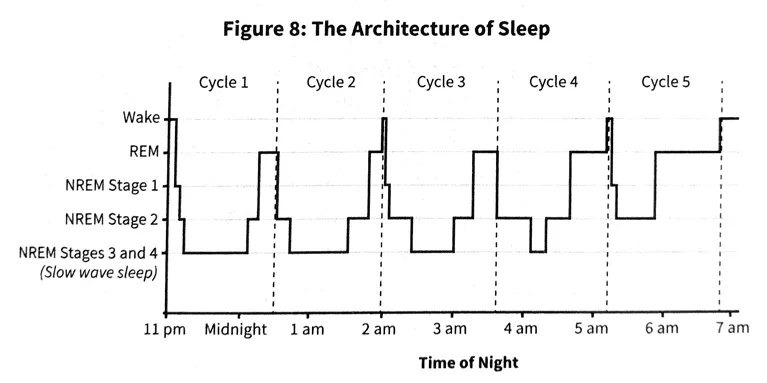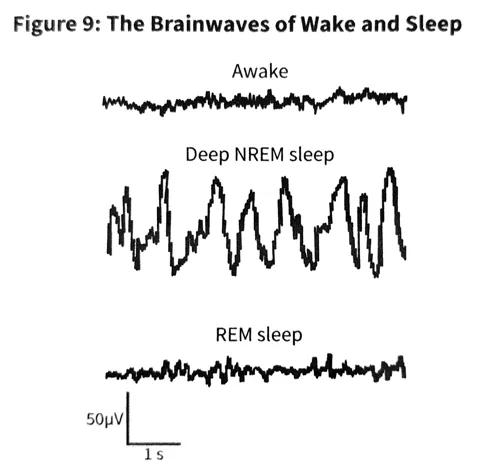What happens when we sleep?
Many doctors and scientists suggest getting at least 8 hours of sleep in a day. Why is sleep so important?

We spent about one third of our life sleeping. In that state, we are not physically active. We can’t gather food. We can’t socialize. Furthermore, we can’t even protect ourselves in the event of predator attack. Yet, evolution didn’t remove the sleep part from our daily routine. Moreover, many doctors and scientists suggest getting at least 8 hours of sleep in a day. Why is it so important? I have been reading a book about sleep called “Why we sleep” by Matthew Walker. In this book, he describes what we know so far about sleep.
When we want to sleep?
First, let’s discuss the two factors that determine when we want to sleep. The first is called the circadian rhythm. It is like a biological clock that repeats approximately every 24 hours. This biological clock affects our body temperature, digestion, immune function, moods and much more. It also directs our sleep. During our normal sleeping hours, our body temperature lowers and a chemical called melatonin starts generating that helps us sleep. Regardless of whether we sleep or not, it continues to follow the pattern. This circadian rhythm is usually in sync with external factors like sunlight. It can be adjusted when we travel to a different timezone, but that takes time. This is why we experience jet lag.
The second factor is another chemical called adenosine that keeps building in our brain when we are awake. This is like a sleep pressure. When the amount is high, we feel sleepy. The amount drops as soon as we sleep. This factor is easier to control compared to the circadian rhythm. Caffeine is one way. When we consume caffeine, it battles with adenosine to latch on the brain receptors. However, the adenosine generation doesn’t stop. We just stop feeling its effect temporarily. As soon as the caffeine goes out from our body, we suddenly feel sleepy because of all the adenosine our body has generated. This is one of the major reason why doctors ask us to avoid caffeine consumption before sleep. Caffeine half-time is about 5-7 hours. Meaning it takes about 5-7 hours to remove half of the caffeine we have consumed.
Types of sleep
There are mainly two types of sleep. Rapid Eye Movement (REM) and Non-Rapid Eye Movement (NREM). During our sleep, we experience multiple cycles of REM and NREM sleep. Each cycle is about 90 minutes long. But not each cycle has the same amount of REM and NREM sleep in it. The initial cycles are dominated by NREM sleep and the later cycles by REM sleep. Here is how it looks.

These cycles help our brain reorganize the neural connections. This eventually helps us to discard the unnecessary stuff from our brain and moving the important stuff to long-term memory. But since the amount of NREM and REM sleep differs in each cycle, we need a continuous 8-hour sleep. Losing the first two or last two hours of sleep can result in losing more than half of NREM or REM sleep.

The deeper sleep cycles are NREM cycles. During these cycles, it is harder to wake up. The brain waves (electrical signals) are long during NREM cycles. Because of the long waves, the communications between different brain region is possible. This helps us move information from short-term memory to long-term memory. During NREM cycles, our brain also removes the unnecessary neural connections to make space for important stuff.
During the REM sleep, our brain activity is very similar to when we are awake. The only difference is that our body is paralyzed just before we enter the REM sleep. This is the state that is associated with dreaming. During this state, our brain strengthens the new connections. It allows us to combine the stored information. The stored memories and emotions are combined and played out on our visual, auditory, and kinesthetic censors. This is what we call dreaming. Thankfully, our body is paralyzed. Otherwise, the world would be chaotic. As you might have guessed, the REM sleep affects with our creativity.
Just like humans, all living species experience sleep. The amount of sleep differs. The percentage of NREM and REM sleep also differs. Insects, amphibians, fish, and most reptiles show no clear signs of REM sleep. But NREM sleep is observed in all living things. Some scientists believe that the REM sleep was developed later during the evolution. The REM sleep helps us with cognitive intelligence and degree of sociocultural complexity. The percentage of REM sleep is higher in humans compared to our primates. Which somehow explains why we are more creative.
To conclude, now we know what are the main factors that help us sleep. The circadian rhythm is the main reason why we should have a fixed time of sleeping. We should avoid coffee to let adenosine do its job. We also learned how our memory and creativity are related to our sleep. So far, I have only described the summary of first few chapters of this book. The book touches many other topics like changes in sleep across the life span, effects of sleep on learning, dreaming and its effects, and tips to improve our sleep. I might write about them in a later post.
My favorites:
Video: Mystery of Kohinoor (by Dhruv, in Hindi with English captions)
Quote: “Being busy is most often used as a guise for avoiding the few critically important but uncomfortable actions.” ― Timothy Ferriss, The 4-Hour Workweek
